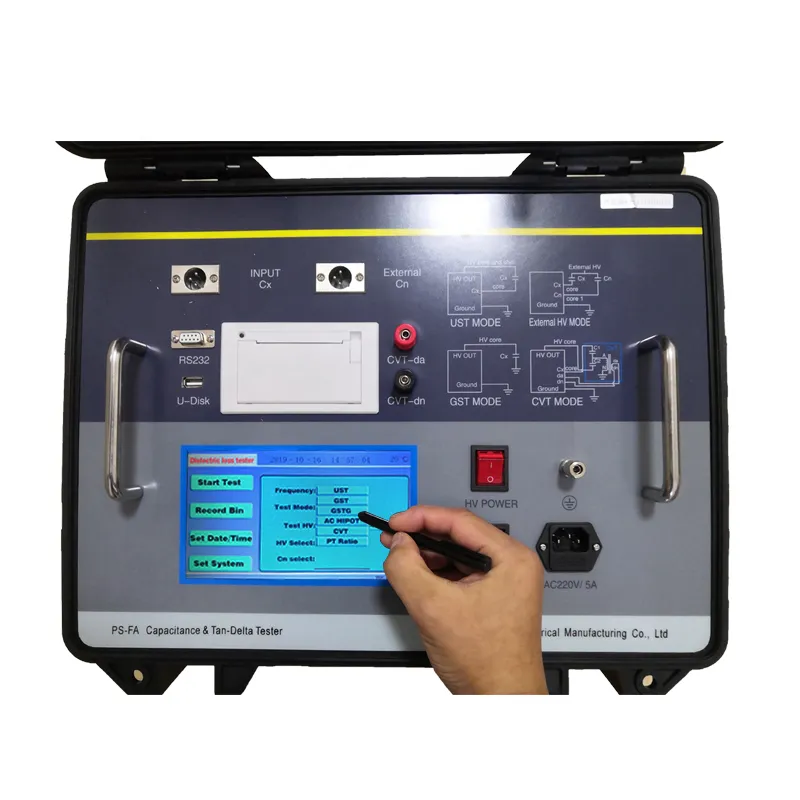 English
English


Evaluating Insulation Resistance Levels in Transformer Systems for Enhanced Performance Reliability
Measurement of Insulation Resistance of Transformers
Insulation resistance measurement is a crucial aspect of ensuring the reliability and longevity of transformers in electrical systems. Transformers, essential components in power distribution, facilitate voltage conversion and help maintain the stability of electrical networks. Given their pivotal role in the management of electrical energy, it becomes imperative to regularly assess their insulation integrity. This article delves into the significance, methods, and best practices for measuring insulation resistance in transformers.
Importance of Insulation Resistance Measurement
The insulation system within a transformer is designed to prevent short circuits and ensure safe operation under high voltages. Over time, however, insulation materials can deteriorate due to factors such as moisture ingress, thermal stress, and electrical aging. A decline in insulation resistance can lead to catastrophic failures, including electrical faults, transformer fire incidents, and even outages. Regular insulation resistance testing serves as a proactive measure to detect potential issues before they escalate.
By accurately measuring the insulation resistance, engineers can evaluate the condition of the insulation material, making informed decisions about maintenance and repair. This not only enhances the safety of the electrical system but also extends the operational lifespan of the transformer.
Measurement Techniques
The insulation resistance of transformers can be evaluated using several methods, with the most common being the Direct Method, using an Insulation Resistance Tester (Megohmmeter). This device applies a specified voltage, usually 500 V or 1000 V, to the insulation system and measures the resulting current to calculate the resistance.
The measurement procedure consists of the following steps
1. Preparation Ensure the transformer is de-energized and disconnected from the system. Verify that all interconnected circuits are isolated to avoid inaccurate readings and potential damage to the testing equipment.
2. Grounding Properly ground all conductive parts of the transformer to ensure safety. This prevents any hazards during testing and protects the equipment.
measurement of insulation resistance of transformer

3. Testing Connect the Megohmmeter's leads to the transformer terminals. For transformers with multiple windings, measurements should be taken across each winding and from each winding to the transformer core. Record the readings as they provide valuable data about the condition of both high-voltage and low-voltage windings.
4. Interpretation Insulation resistance values are typically expressed in megohms (MΩ). According to industry standards, a minimum insulation resistance of 1 MΩ per kilovolt of rated voltage is advisable. For instance, a transformer rated at 11 kV should have an insulation resistance of at least 11 MΩ.
Factors Affecting Measurement Results
Several factors can influence insulation resistance measurements, including temperature, humidity, and the age of the insulation material. It's essential to consider these parameters when interpreting results. For instance, high humidity can lead to lower resistance readings due to the presence of moisture, which acts as a conductive medium.
Furthermore, it is beneficial to conduct measurements over time to track trends. A sudden drop in resistance values may indicate developing issues that warrant immediate attention.
Best Practices
To achieve accurate and reliable insulation resistance measurements, adhere to the following best practices
- Schedule regular testing intervals, ideally during routine maintenance checks. - Utilize calibrated and high-quality measurement equipment to enhance the validity of the readings. - Maintain detailed records of insulation resistance measurements to monitor trends and identify potential problems early. - Educate personnel on the proper procedures for conducting insulation resistance tests to ensure consistency and safety during tests.
Conclusion
The measurement of insulation resistance in transformers is a critical maintenance practice that significantly impacts their reliability and safety. By regularly assessing insulation integrity, operators can prevent unforeseen failures, enhance operational efficiency, and ensure a stable power supply. Given the increasing demands on electrical systems, understanding and implementing proper insulation resistance measurement techniques is more important than ever for electrical engineers and maintenance professionals.
-
Differences between open cup flash point tester and closed cup flash point testerNewsOct.31,2024
-
The Reliable Load Tap ChangerNewsOct.23,2024
-
The Essential Guide to Hipot TestersNewsOct.23,2024
-
The Digital Insulation TesterNewsOct.23,2024
-
The Best Earth Loop Impedance Tester for SaleNewsOct.23,2024
-
Tan Delta Tester--The Essential Tool for Electrical Insulation TestingNewsOct.23,2024





